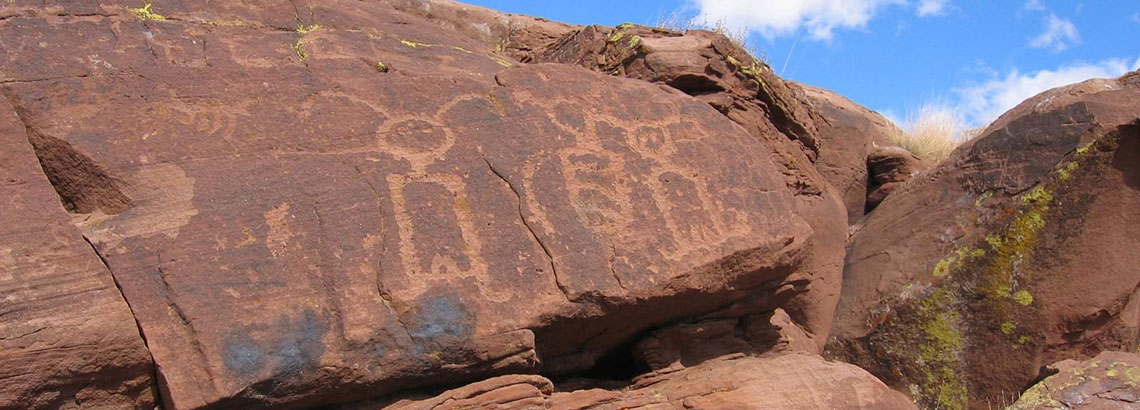
Southwest Social Networks Project
The Southwest Social Networks Project is a collaborative project focused on applying methods and models from the interdiciplinary field of social network analyses to archaeological data from the U.S. Southwest and Mexcian Northwest.
In the simplest terms, a social network is a set of actors — individuals, communities, or other organizations — and the connections among them. Connections can represent a broad range of relationships between pairs of actors: kinship ties, friendship, frequent interaction, exchange partnerships, political alliances, etc.
Social network analysis (SNA) refers to the formal methods and models for studying the structure and dynamics of such social networks.
Project Details
The overarching goal of the Southwest Social Networks (SWSN) Project is to explore the nature and dynamics of social networks at various spatial and demographic scales across a large portion of the U.S. Southwest in order to both address important questions focused on the ancient Southwest and also to test general models of network dynamics and social change using the long-term perspective provided by high-resolution archaeological data.
The project involves a diverse group of collaborators including archaeologists, sociologists, geochemists and computer scientists from a number of academic institutions and research organizations. Project funding has been provided by the National Science Foundation through two collaborative grants to the School of Anthropology at the University of Arizona and the non-profit Archaeology Southwest in Tucson, Arizona.
This work is focused on developing an ever-growing synthetic regional database of archaeological information across the Southwest as well as new analytical tools for exploring such large datasets. These data and tools are maintained by Matthew Peeples in the School of Human Evolution and Social Change at Arizona State University.
The SWSN project has proceeded in two phases.
Phase I focused focused on the late pre-contact Southwest in Arizona and New Mexico (ca. A.D. 1200-1500) west of the Continental Divide. This period marks an interval of dramatic social and demographic change across the Southwest. The SWSN team has compiled information on site locations, features and size, as well as the materials made and used at those sits across the study area to investigate regional networks of interaction and exchange. Specifically, we address how changing patterns and scales of interaction across social networks may have influenced or been influenced by regional-scale migrations and settlement reorganization during this tumultous period.
Phase II of the project, currently underway, is focused on the greater Chaco World (ca. A.D. 800-1300) in the northern half of the Southwest. Using material cultural and architectural data from settlements with public architectural features relating to developments in Chaco Canyon, we are exploring how networks of interaction at various scales changed across the initial origins and subsequent spread of Chacoan social and political developments.
Partners: University of Arizona, School of Anthropology | Archaeology Southwest
Research Team
- Matthew Peeples, ASU
- Barbara J. Mills, University of Arizona
- Jeffery J. Clark, Archaeology Southwest
Funding
National Science Foundation, Archaeology Program - Collaborative Research: Exploring Adaptive Social Networks in the Face of Geographic Adversity
National Science Foundation, Human Social Dynamics Program - Collaborative Research: The Structure and Dynamics of Social Networks in the Southwest
Outcomes
Giomi, Evan and Matthew A. Peeples (2019). Network Analysis of Intrasite Material Networks and Ritual Practice at Pueblo Bonito. Journal of Anthropological Archaeology 53(1):22-31.
Mills, Barbara J., Matthew A. Peeples, Leslie Aragon, Benjamin Bellorado, Jeffery J. Clark, Evan Giomi, and Thomas C. Windes (2018). Chaco Regional Networks and Migration Scenarios. Antiquity 92(364):922-939
Mills, Barbara J., Matthew A. Peeples, William R. Haas, Jr., Lewis Borck, Jeffery J. Clark, and John M. Roberts, Jr. (2015). Multiscalar Perspectives on Social Networks in the Late Prehispanic Southwest. American Antiquity 80(1):3-24
Bernardini, Wesley and Matthew A. Peeples (2015). Sight Communities: The Social Significance of Shared Visual Landmarks. American Antiquity 80(2):215-235.
Peeples, Matthew A. and W. Randall Haas, Jr (2013). Brokerage and Social Capital in the Prehispanic U.S. Southwest. American Anthropologist 115(2):232-246.
Mills, Barbara J., Jeffery J. Clark, Matthew A. Peeples, W. R. Haas, Jr., John M. Roberts, Jr., J. Brett Hill, Deborah L. Huntley, Lewis Borck, Ronald L. Breiger, Aaron Clauset, M. Steven Shackley (2013). The Transformation of Social Networks in the Late Pre-Hispanic U.S. Southwest. Proceedings of the National Academy of Sciences 110(15):5785-5790.